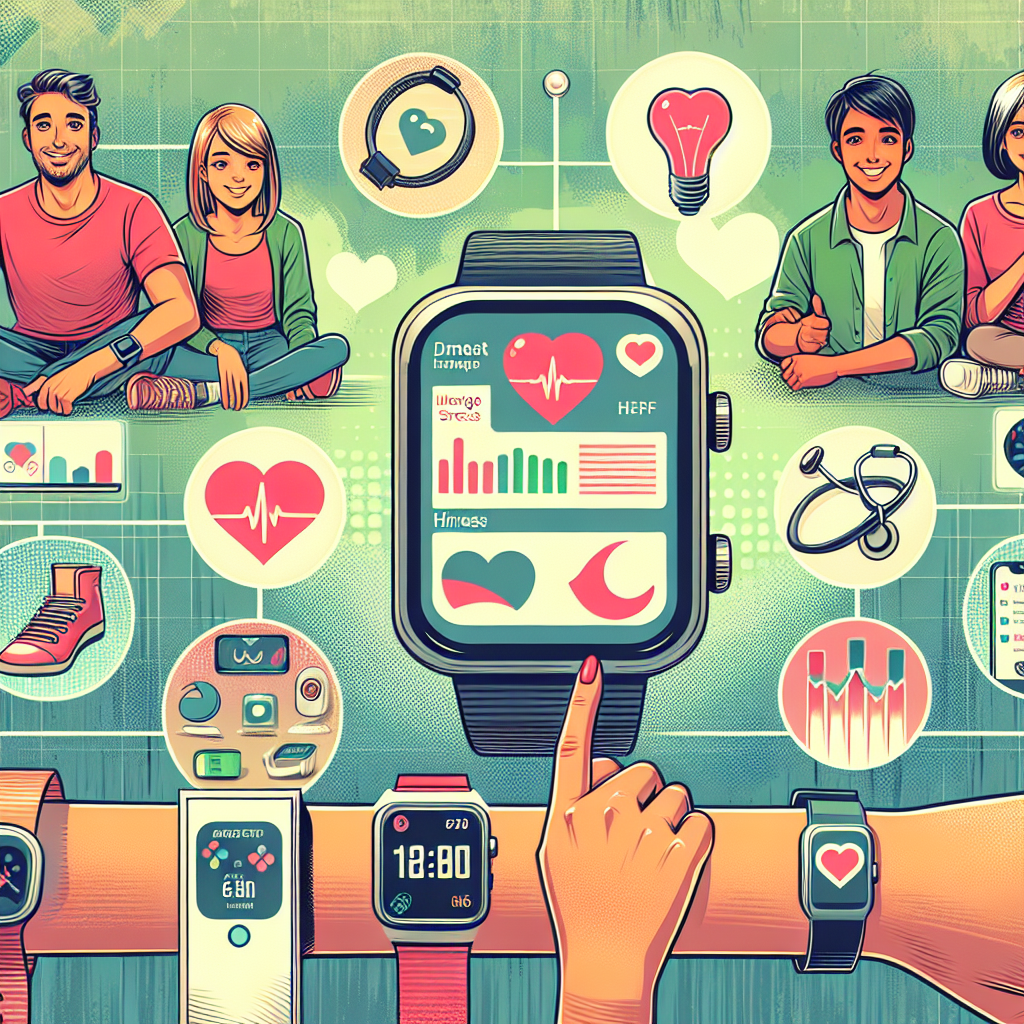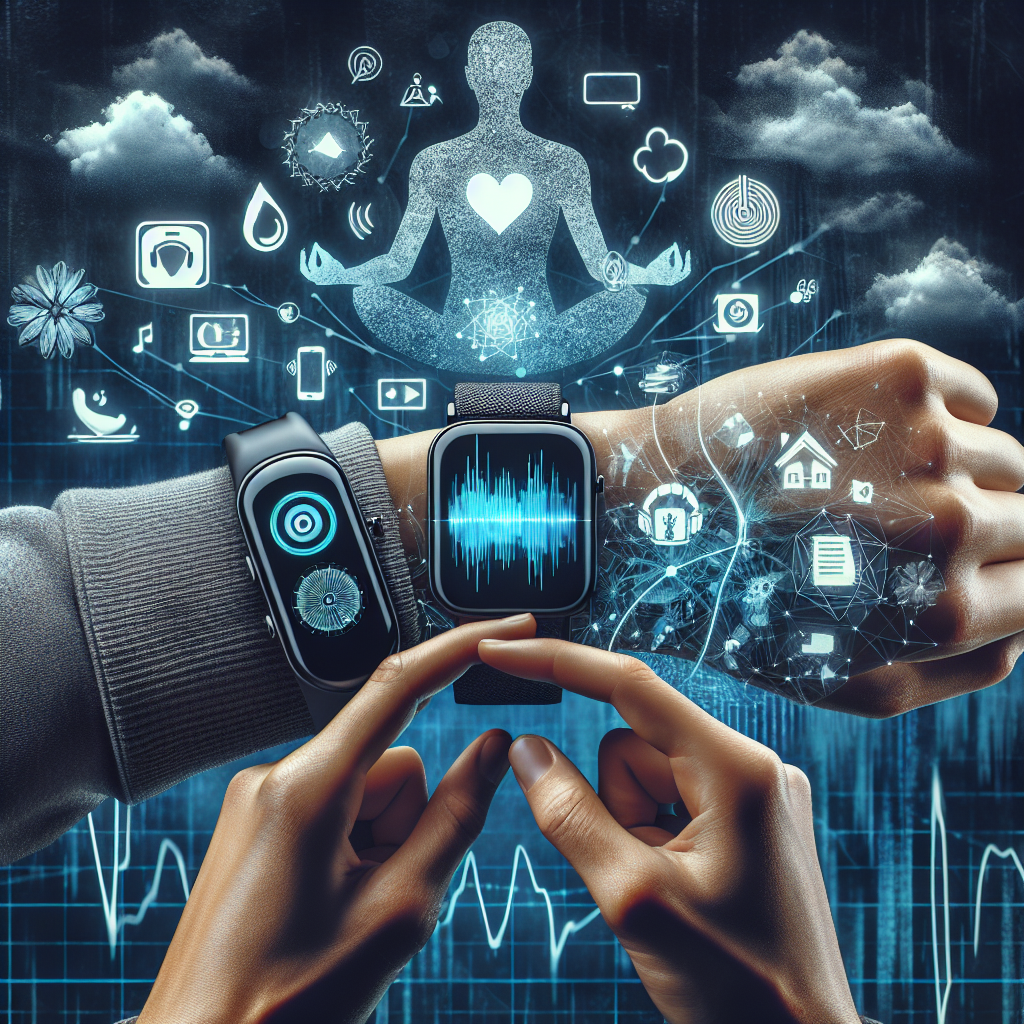Using Wearables to Manage Stress: What Actually Helps

Discover the power of wearables in managing stress effectively. Learn what actually helps by visiting My Vibrant Vitality today. Empower your wellness journey now!
Exploring the Effectiveness of Wearables in Stress Management
In the fast-paced world we live in, stress has become an inevitable part of our lives. It is a common phenomenon that affects people of all ages and walks of life. While a certain amount of stress can be beneficial, chronic stress can lead to serious health problems. As a result, stress management has become a crucial aspect of maintaining overall health and well-being. In recent years, wearable technology has emerged as a promising tool for managing stress. However, the question remains: how effective are these wearables in stress management?
Wearable technology, or simply wearables, refers to electronic devices that can be worn on the body as accessories or implants. These devices have the ability to connect to the internet, enabling data exchange between a network and the device. Wearables have been gaining popularity in the health and wellness sector due to their potential to monitor various health parameters. Among these, stress management is one area where wearables are being increasingly utilized.
Wearables designed for stress management typically work by monitoring physiological indicators of stress. These may include heart rate variability, skin temperature, and galvanic skin response, among others. By tracking these indicators, wearables can provide real-time feedback about the user’s stress levels. This information can then be used to implement stress-reducing interventions, such as deep breathing exercises or mindfulness techniques.
However, while the concept of using wearables for stress management sounds promising, it is important to consider the actual effectiveness of these devices. Research on the effectiveness of wearables in stress management is still in its early stages, but the results so far have been mixed. Some studies have found that wearables can indeed help reduce stress levels, while others have found no significant effect.
One of the main challenges in assessing the effectiveness of wearables in stress management is the subjective nature of stress. Stress is a highly personal experience that can vary greatly from person to person. What may be stressful for one person may not be for another. Therefore, it can be difficult to objectively measure stress levels and the effectiveness of stress-reducing interventions.
Moreover, while wearables can provide valuable data about physiological indicators of stress, they cannot address the underlying causes of stress. For instance, a wearable may alert a user to a spike in heart rate variability, indicating increased stress levels. However, it cannot help the user address the root cause of this stress, whether it be work pressure, relationship issues, or financial worries.
Despite these challenges, wearables can still play a valuable role in stress management. They can serve as a tool for increasing awareness of stress levels and patterns, which is the first step towards effective stress management. By providing real-time feedback, wearables can help users identify stress triggers and implement stress-reducing strategies in a timely manner.
In conclusion, while wearables may not be a magic bullet for stress management, they can certainly be a useful tool. Their effectiveness largely depends on how they are used and the individual’s commitment to managing stress. As research in this area continues to evolve, it is hoped that wearables will become an increasingly effective tool in the fight against stress.
How Wearable Technology Can Help in Reducing Stress Levels

In today’s fast-paced world, stress has become an inevitable part of our lives. It is a common issue that affects our mental, emotional, and physical well-being. However, with the advent of wearable technology, managing stress has become more accessible and efficient. Wearable devices, such as smartwatches and fitness trackers, are now equipped with features that can help monitor and reduce stress levels.
Wearable technology has come a long way from merely tracking steps and heart rates. Today, these devices are equipped with advanced sensors and algorithms that can monitor various physiological signals related to stress. For instance, some wearables can measure heart rate variability (HRV), a key indicator of stress. HRV refers to the variation in the time interval between heartbeats, and it is influenced by stress and emotional states. When you are stressed, your HRV tends to decrease, indicating a lack of balance in your autonomic nervous system. By monitoring your HRV, wearables can provide real-time feedback about your stress levels, enabling you to take proactive steps to manage it.
Moreover, wearables can also monitor other physiological parameters associated with stress, such as skin temperature and perspiration levels. When you are stressed, your body’s fight-or-flight response is activated, leading to an increase in skin temperature and perspiration. By tracking these parameters, wearables can provide insights into your stress levels and help you understand what triggers your stress.
In addition to monitoring stress, wearable technology can also provide solutions to manage it. Many wearables now come with built-in stress management features, such as guided breathing exercises and mindfulness meditation sessions. These features can help you calm your mind, reduce your heart rate, and bring your body back to a state of balance. For instance, guided breathing exercises can help you focus on your breath, diverting your attention away from stressors and promoting relaxation. Similarly, mindfulness meditation can help you stay present and avoid getting caught up in stressful thoughts.
Furthermore, wearables can also provide personalized recommendations to manage stress based on your data. For example, if your wearable detects that your stress levels are high, it may suggest you take a break, do some physical activity, or engage in a relaxation exercise. These personalized recommendations can help you adopt healthier habits and make more informed decisions about your well-being.
However, while wearable technology can be a useful tool in managing stress, it is important to remember that it is not a substitute for professional help. If you are experiencing chronic or severe stress, it is crucial to seek help from a healthcare professional. Wearable technology can complement traditional stress management strategies, but it should not replace them.
In conclusion, wearable technology has the potential to revolutionize the way we manage stress. By providing real-time feedback about our stress levels and offering solutions to manage it, wearables can empower us to take control of our well-being. As technology continues to evolve, we can expect to see even more innovative ways to use wearables to manage stress. However, it is important to use these tools wisely and seek professional help when necessary.
The Role of Wearable Devices in Stress Management: A Comprehensive Review
Wearable technology has become a significant part of our lives, offering a plethora of benefits from fitness tracking to sleep monitoring. One of the most promising applications of these devices is in the realm of stress management. With the increasing prevalence of stress-related disorders, the role of wearable devices in stress management has become a topic of considerable interest.
Wearable devices, such as smartwatches and fitness trackers, are equipped with sensors that can monitor various physiological parameters. These parameters include heart rate, skin temperature, and galvanic skin response, which are all indicators of stress. By continuously monitoring these parameters, wearable devices can provide real-time feedback about the user’s stress levels. This feedback can be used to alert the user when their stress levels are high, prompting them to take steps to reduce their stress.
Moreover, many wearable devices come with built-in stress management features. For instance, some devices offer guided breathing exercises that can help users calm down during stressful situations. Others provide mindfulness and meditation exercises that can help users relax and focus. These features can be particularly useful for individuals who struggle with chronic stress or anxiety, as they provide easy-to-access tools for stress relief.
However, while wearable devices can provide valuable data and tools for stress management, it’s important to note that they are not a substitute for professional help. If you’re dealing with severe or persistent stress, it’s crucial to seek help from a healthcare professional. Wearable devices can complement professional treatment, but they should not be used as the sole method of managing stress.
Furthermore, it’s essential to use wearable devices responsibly. While these devices can provide useful insights into your stress levels, they can also lead to increased anxiety if not used correctly. Constantly checking your stress levels can make you more aware of your stress, but it can also make you more anxious about it. Therefore, it’s important to strike a balance between being aware of your stress levels and obsessing over them.
In conclusion, wearable devices can play a significant role in stress management. They can provide real-time feedback about your stress levels, offer tools for stress relief, and complement professional treatment. However, they should be used responsibly and as part of a comprehensive stress management plan. It’s also important to remember that while wearable devices can help manage stress, they are not a cure-all solution. Stress management requires a holistic approach that includes lifestyle changes, professional help, and, in some cases, medication. Wearable devices can be a valuable tool in this process, but they are just one piece of the puzzle.
As technology continues to evolve, it’s likely that the role of wearable devices in stress management will continue to grow. Future devices may be able to provide even more accurate and detailed feedback about stress levels, and offer more sophisticated tools for stress relief. However, as with any tool, the key to effective stress management lies not just in the technology itself, but in how it’s used.